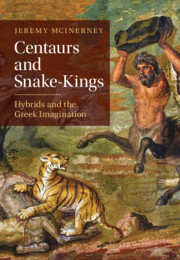This paper attempts to put the Gorgon from the pediment of the Temple of Sulis Minerva at Bath into a wider provincial context, by arguing for links between the Gorgon and first- and early second-century imitations in Gaul and Spain of the iconography of the Forum of Augustus in Rome. These imitations, part of what might be called a ‘visual language of empire’, served to connect the urban spaces of the provinces to Rome; by linking the Gorgon to this trend and setting aside interpretations of the Gorgon which have focused on his perceived status as a ‘Romano-Celtic’ masterpiece, we can justify more satisfactorily his position as the centrepiece of a pediment dominated by imperial imagery.


